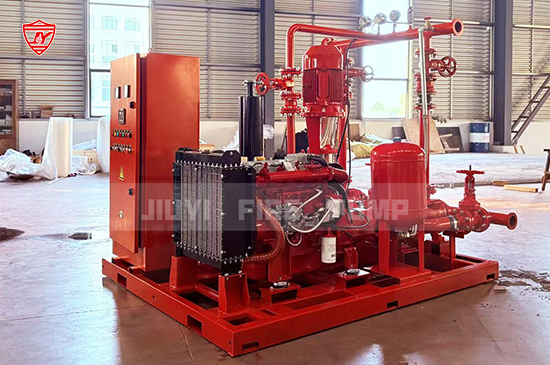Fire pumps are critical in ensuring water availability during fire emergencies. However, in regions with freezing temperatures, fire pump systems face a significant challenge—water freezing within pipes, which can block water flow or even damage equipment. To counteract this, some fire pump systems use antifreeze loops, a solution designed to maintain operational efficiency even in extreme cold.

An antifreeze loop is a closed system containing a pre-mixed antifreeze solution that circulates through designated sections of the fire pump system. This solution prevents freezing by maintaining a temperature above the freezing point, ensuring uninterrupted water flow during emergencies.
Prevent System Freeze-Ups – In sub-zero temperatures, stagnant water in pipes can freeze, expanding and causing cracks or blockages. An antifreeze loop prevents this from happening.
Ensure Immediate Fire Response – Without proper freeze protection, a fire pump might fail when needed the most, delaying firefighting efforts and increasing potential damage.
Compliance with NFPA Standards – The NFPA 20 standard outlines requirements for fire pump installations in cold climates, where freeze prevention measures, including antifreeze loops, are recommended.
Protect System Components – Fire pumps, valves, and piping are costly to repair or replace. An antifreeze loop extends their lifespan by preventing freeze-related damage.
Besides antifreeze loops, other solutions include:
Heated Enclosures – Fire pumps can be housed in insulated and heated rooms to prevent freezing.
Heat Tracing Cables – Electric heating cables wrapped around pipes keep water from freezing.
Circulation Systems – Regularly moving water through the system reduces the risk of stagnation and freezing.
For fire safety systems in cold climates, ensuring reliability through antifreeze loops is essential. By preventing freezing, these loops help maintain constant fire protection, meet safety regulations, and prolong equipment life. Whether designing a new fire pump system or upgrading an existing one, incorporating the right freeze protection strategy is crucial for year-round fire safety.